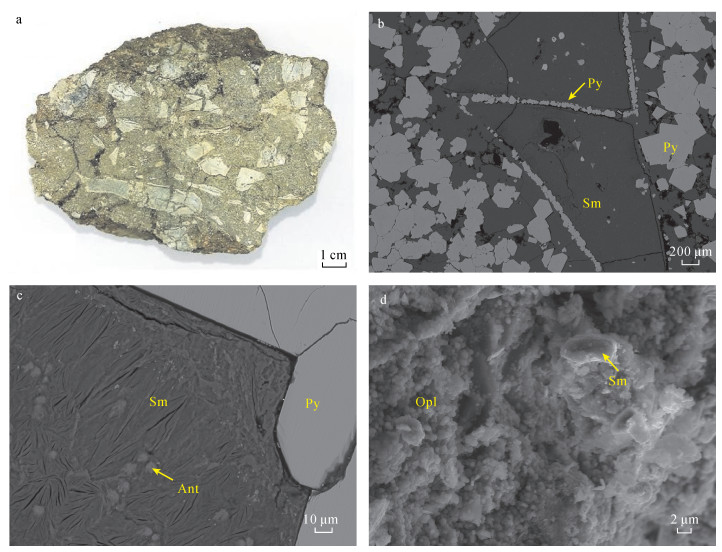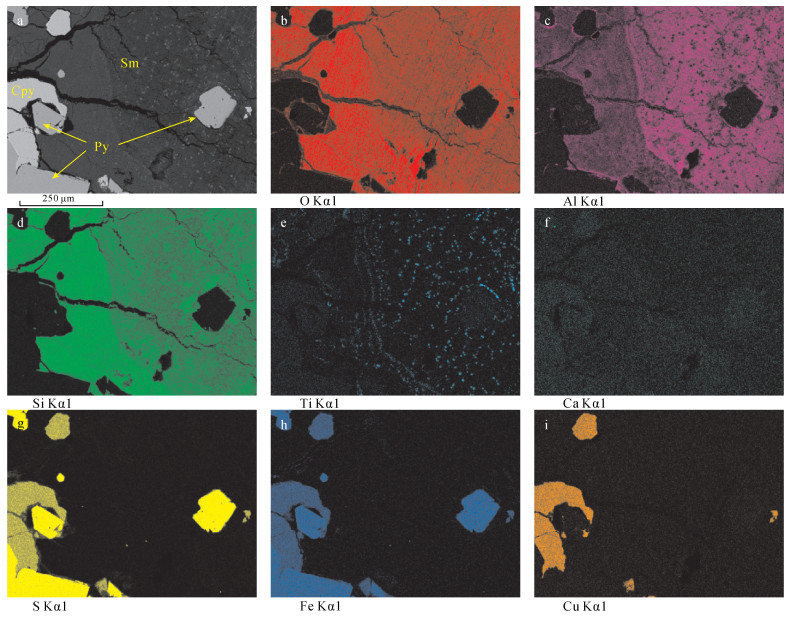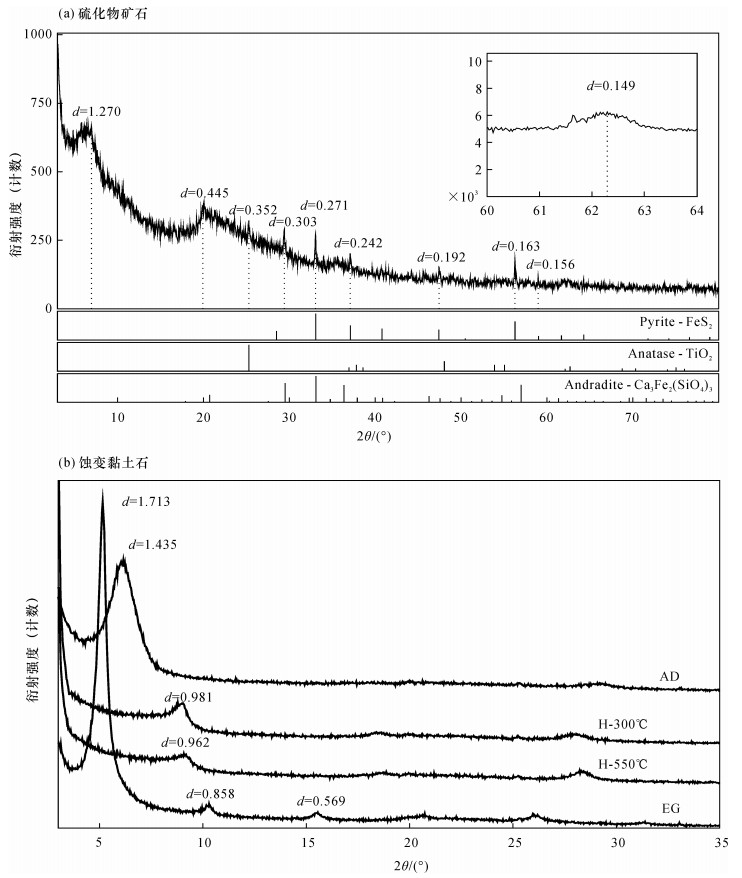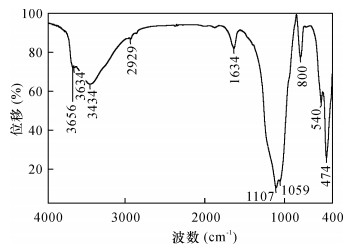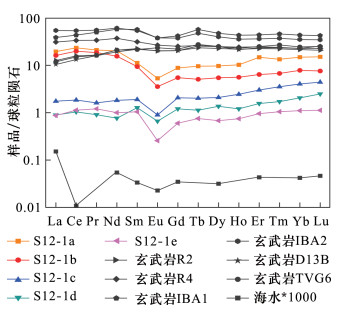| [1] |
Hazen R M, Sverjensky D A, Azzolini D, et al.Clay mineral evolution[J]. American Mineralogist, 2013, 98(11-12):2007-2029. doi: 10.2138/am.2013.4425
CrossRef Google Scholar
|
| [2] |
Cuadros J, Dekov V M, Arroyo X, et al.Smectite Formation in Submarine Hydrothermal Sediments:Samples from the HMS Challenger Expedition (1872-1876)[J]. Clays and Clay Minerals, 2011, 59(2):147-164. doi: 10.1346/CCMN.2011.0590204
CrossRef Google Scholar
|
| [3] |
Severmann S, Mills R A, Palmer M R, et al.The origin of clay minerals in active and relict hydrothermal deposits[J]. Geochimica et Cosmochimica Acta, 2004, 68(1):73-88. doi: 10.1016/S0016-7037(03)00235-7
CrossRef Google Scholar
|
| [4] |
Lackschewitz K S, Botz R, Garbe-Schönberg D, et al.Mineralogy and geochemistry of clay samples from active hydrothermal vents off the north coast of Iceland[J]. Marine Geology, 2006, 225(1):177-190.
Google Scholar
|
| [5] |
Zierenberg R A, Schiffman P, Jonasson I R, et al.Altera-tion of basalt hyaloclastite at the off-axis Sea Cliff hydrothermal field, Gorda Ridge[J]. Chemical Geology, 1995, 126(2):77-99. doi: 10.1016/0009-2541(95)00111-2
CrossRef Google Scholar
|
| [6] |
Haymon R M, Kastner M.The formation of high temperature clay minerals from basalt alteration during hydrothermal discharge on the East Pacific Rise axis at 21°N[J]. Geochimica et Cosmochimica Acta, 1986, 50(9):1933-1939. doi: 10.1016/0016-7037(86)90249-8
CrossRef Google Scholar
|
| [7] |
German C R, Baker E T, Mevel C, et al.Hydrothermal activity along the Southwest Indian Ridge[J]. Nature, 1998, 395:490-493. doi: 10.1038/26730
CrossRef Google Scholar
|
| [8] |
Tao C H, Lin J, Guo S Q, et al.First active hydrothermal vents on an ultraslow-spreading center:Southwest Indian Ridge[J]. Geology, 2012, 40(1):47-50. doi: 10.1130/G32389.1
CrossRef Google Scholar
|
| [9] |
Nakamura K, Kato Y, Tamaki K, et al.Geochemistry of hydrothermally altered basaltic rocks from the Southwest Indian Ridge near the Rodriguez Triple Junction[J]. Marine Geology, 2007, 239(3):125-141.
Google Scholar
|
| [10] |
王琰, 孙晓明, 徐莉, 等.西南印度洋中脊热液区海底玄武岩元素地球化学原位分析[J].光谱学与光谱分析, 2015, 35(3):796-802. doi: 10.3964/j.issn.1000-0593(2015)03-0796-07
CrossRef Google Scholar
Wang Y, Sun X M, Xu L, et al.In situ analysis of element geochemistry in submarine basalt in hydrothermal areas from ultraslow spreading Southwest Indian Ridge[J]. Spectroscopy and Spectral Analysis, 2015, 35(3):796-802. doi: 10.3964/j.issn.1000-0593(2015)03-0796-07
CrossRef Google Scholar
|
| [11] |
叶俊, 石学法, 杨耀民, 等.西南印度洋超慢速扩张脊49.6°E热液区硫化物矿物学特征及其意义[J].矿物学报, 2011, 31(1):17-29.
Google Scholar
Ye J, Shi X F, Yang Y M, et al.Mineralogy of sulfides from ultraslow spreading Southwest Indian Ridge 49.6°E hydrothermal field and its metallogenic significance[J]. Acta Mineralogica Sinica, 2011, 31(1):17-29.
Google Scholar
|
| [12] |
Tao C H, Li H M, Huang W, et al.Mineralogical and geochemical features of sulfide chimneys from the 49°39'E hydrothermal field on the Southwest Indian Ridge and their geological inferences[J]. Science Bulletin, 2011, 56(26):2828-2838. doi: 10.1007/s11434-011-4619-4
CrossRef Google Scholar
|
| [13] |
于淼, 苏新, 陶春辉, 等.西南印度洋中脊49.6°E和50.5°E区玄武岩岩石学及元素地球化学特征[J].现代地质, 2013, 27(3):497-508. doi: 10.3969/j.issn.1000-8527.2013.03.001
CrossRef Google Scholar
Yu M, Su X, Tao C H, et al.Petrological and geochemical features of basalts at 49.6°E and 50.5°E hydrothermal fields along the Southwest Indian Ridge[J]. Geoscience, 2013, 27(3):497-508. doi: 10.3969/j.issn.1000-8527.2013.03.001
CrossRef Google Scholar
|
| [14] |
王振波, 武光海, 韩沉花.西南印度洋脊49.6°E热液区热液产物和玄武岩地球化学特征[J].海洋学研究, 2014, 32(1):64-73.
Google Scholar
Wang Z B, Wu G H, Han C H.Geochemical characteristics of hydrothermal deposits and basalts at 49.6°E on the Southwest Indian Ridge[J]. Journal of Marine Sciences, 2014, 32(1):64-73.
Google Scholar
|
| [15] |
Howard K J, Fisk M R.Hydrothermal alumina-rich clays and boehmite on the Gorda Ridge[J]. Geochimica et Cosmochimica Acta, 1988, 52(9):2269-2279. doi: 10.1016/0016-7037(88)90129-9
CrossRef Google Scholar
|
| [16] |
Papoulis D, Tsoliskatagas P, Kalampounias A G, et al.Progressive formation of halloysite from the hydrothermal alteration of biotite and the formation mechanisms of anatase in altered volcanic rocks from Limnos Island, Northeast Aegean Sea, Greece[J]. Clays and Clay Minerals, 2009, 57(5):566-577. doi: 10.1346/CCMN.2009.0570505
CrossRef Google Scholar
|
| [17] |
Monecke T, Giorgetti G, Scholtysek O, et al.Textural and mineralogical changes associated with the incipient hydrothermal alteration of glassy dacite at the submarine PACMANUS hydrothermal system, Eastern Manus Basin[J]. Journal of Volcanology and Geothermal Research, 2007, 160(1):23-41.
Google Scholar
|
| [18] |
Zhou H Y, Luo A, Yang Q H.A hydrothermal Complex Chimney Found in Dragon Flag Field, Southwest Indian Ridge[M]. Goldschmidt Abstract, 2017.
Google Scholar
|
| [19] |
Zviagina B B, McCarty D K, Środonón J, et al.Inter-pretation of infrared spectra of dioctahedral smectites in the region of OH-stretching vibrations[J]. Clays and Clay Minerals, 2004, 52(4):399-410. doi: 10.1346/CCMN.2004.0520401
CrossRef Google Scholar
|
| [20] |
Cao Z M, Cao H, Tao C H, et al.Rare earth element geochemistry of hydrothermal deposits from Southwest Indian Ridge[J]. Acta Oceanologica Sinica, 2012, 31(2):62-69. doi: 10.1007/s13131-012-0192-1
CrossRef Google Scholar
|
| [21] |
Douville E, Bienvenu P, Charlou J L, et al.Yttrium and rare earth elements in fluids from various deep-sea hydrothermal systems[J]. Geochimica et Cosmochimica Acta, 1999, 63(5):627-643. doi: 10.1016/S0016-7037(99)00024-1
CrossRef Google Scholar
|
| [22] |
Karakaya M Ç, Karakaya N, Küpeli Ş, et al.Mine-ralogy and geochemical behavior of trace elements of hydrothermal alteration types in the volcanogenic massive sulfide deposits, NE Turkey[J]. Ore Geology Reviews, 2012, 48:197-224. doi: 10.1016/j.oregeorev.2012.03.007
CrossRef Google Scholar
|
| [23] |
Sverjensky D A.Europium redox equilibria in aqueous solution[J]. Earth and Planetary Science Letters, 1984, 67(1):70-78. doi: 10.1016/0012-821X(84)90039-6
CrossRef Google Scholar
|
| [24] |
Wood S A.The aqueous geochemistry of the rare-earth elements and yttrium:2.Theoretical predictions of speciation in hydrothermal solutions to 350℃ at saturation water vapor pressure[J]. Chemical Geology, 1990, 88(1):99-125.
Google Scholar
|
| [25] |
Lewis A J, Palmer M R, Sturchio N C, et al.The rare earth element geochemistry of acid-sulphate and acid-sulphate-chloride geothermal systems from Yellowstone National Park, Wyoming, USA[J]. Geochimica et Cosmochimica Acta, 1997, 61(4):695-706. doi: 10.1016/S0016-7037(96)00384-5
CrossRef Google Scholar
|
| [26] |
Sun S S, Mcdonough W F.Chemical and isotopic sys-tematics of oceanic basalts:Implications for mantle composition and processes[J]. Geological Society London Special Publications, 1989, 42(1):313-345. doi: 10.1144/GSL.SP.1989.042.01.19
CrossRef Google Scholar
|
| [27] |
Mitra A, Elderfield H, Greaves M J.Rare earth elements in submarine hydrothermal fluids and plumes from the Mid-Atlantic Ridge[J]. Marine Chemistry, 1994, 46(3):217-235. doi: 10.1016/0304-4203(94)90079-5
CrossRef Google Scholar
|
| [28] |
Honnorez J.Hydrothermal alteration vs.ocean-floor me-tamorphism.A comparison between two case histories:The TAG hydrothermal mound (Mid-Atlantic Ridge) vs.DSDP/ODP Hole 504B (Equatorial East Pacific)[J]. Comptes Rendus Geoscience, 2003, 335(10-11):781-824. doi: 10.1016/j.crte.2003.08.009
CrossRef Google Scholar
|
| [29] |
Środoń J.Nature of mixed-layer clays and mechanisms of their formation and alteration[J]. Annual Review of Earth and Planetary Sciences, 1999, 27:19-53.
Google Scholar
|
| [30] |
Simmons S F.Hydrothermal minerals and precious me-tals in the Broadlands-Ohaaki geothermal system:Implications for understanding low-sulfidation epithermal environments[J]. Economic Geology, 2000, 95(5):971-999. doi: 10.2113/gsecongeo.95.5.971
CrossRef Google Scholar
|
| [31] |
Giorgetti G, Monecke T, Kleeberg R, et al.Low-temper-ature hydrothermal alteration of trachybasalt at Conical Seamount, Papua New Guinea:Formation of smectite and metastable precursor phases[J]. Clays and Clay Minerals, 2009, 57(6):725-741. doi: 10.1346/CCMN.2009.0570606
CrossRef Google Scholar
|
| [32] |
Tivey M K, Stakes D S, Cook T L, et al.A model for growth of steep-sided vent structures on the Endeavour Segment of the Juan de Fuca Ridge:Results of a petrologic and geochemical study[J]. Journal of Geophysical Research Solid Earth, 1999, 104(B10):22859-22883. doi: 10.1029/1999JB900107
CrossRef Google Scholar
|





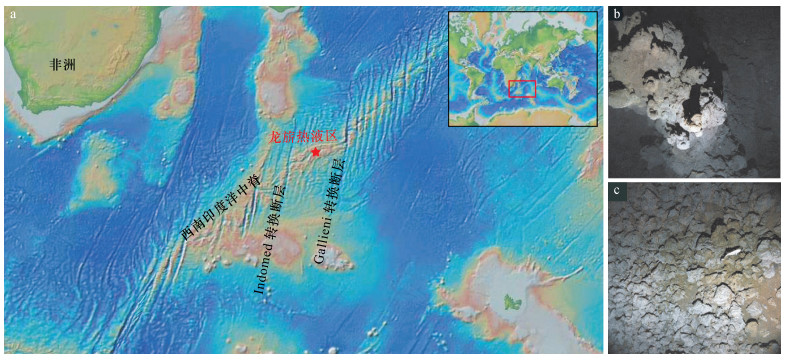

 DownLoad:
DownLoad:
